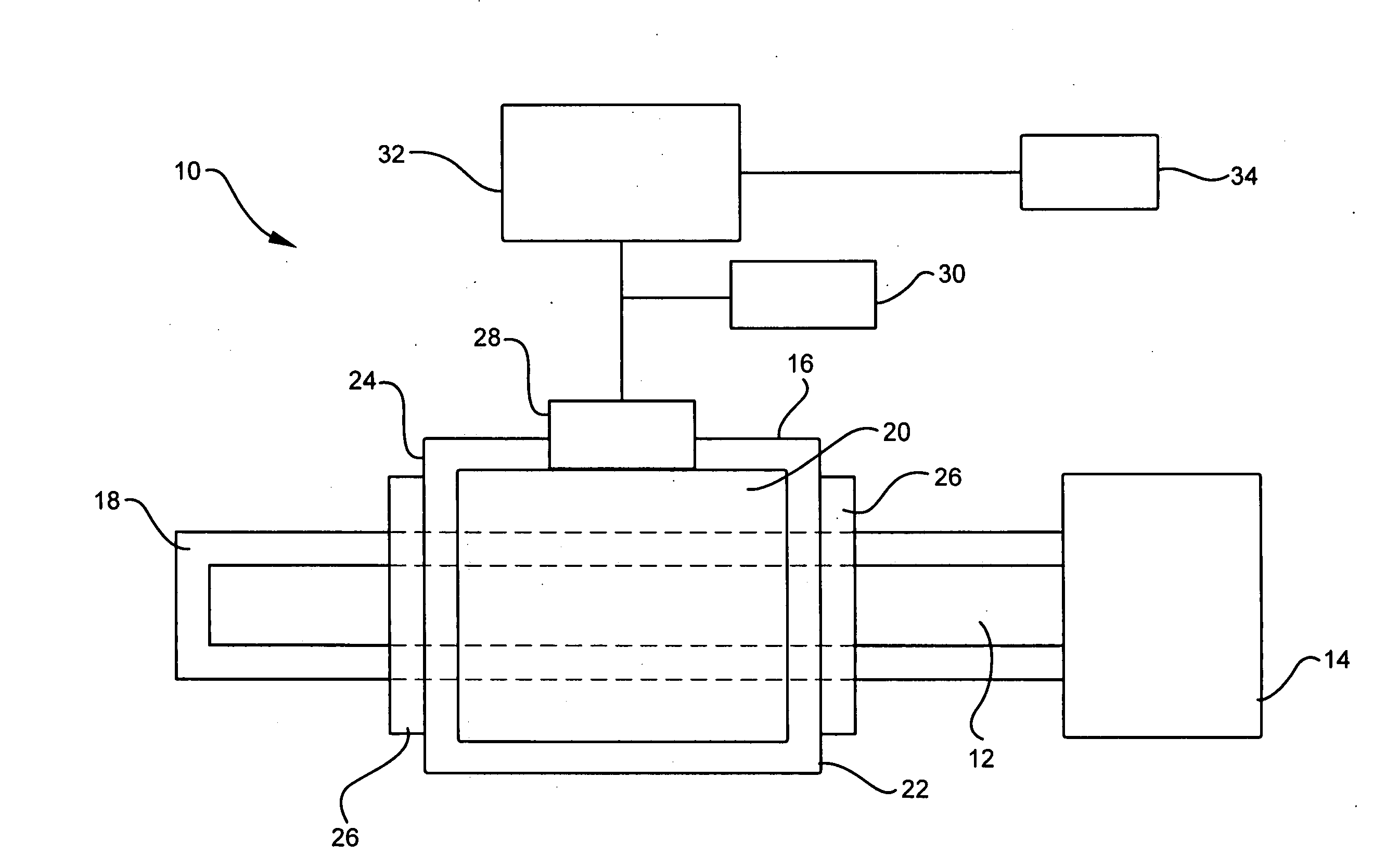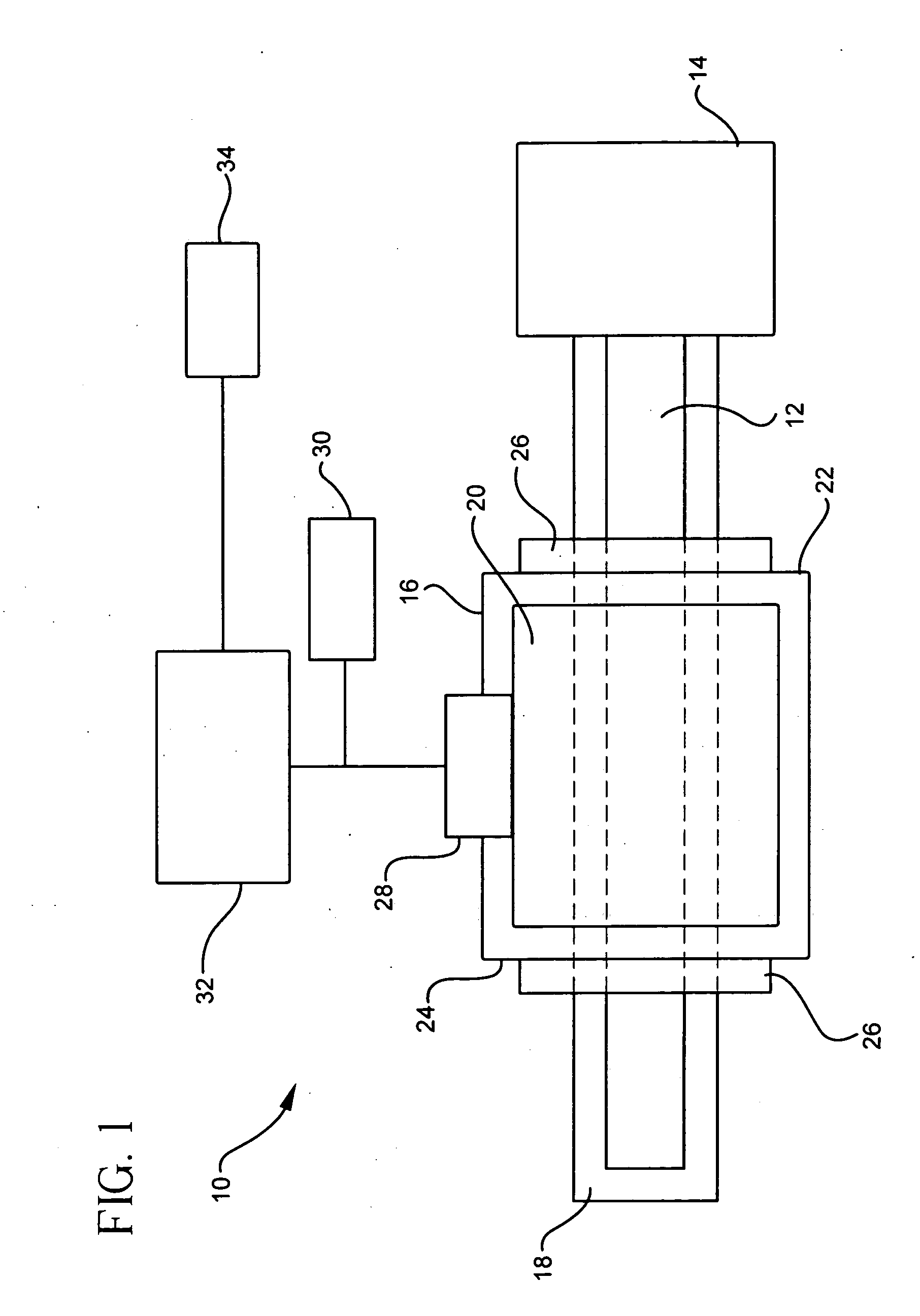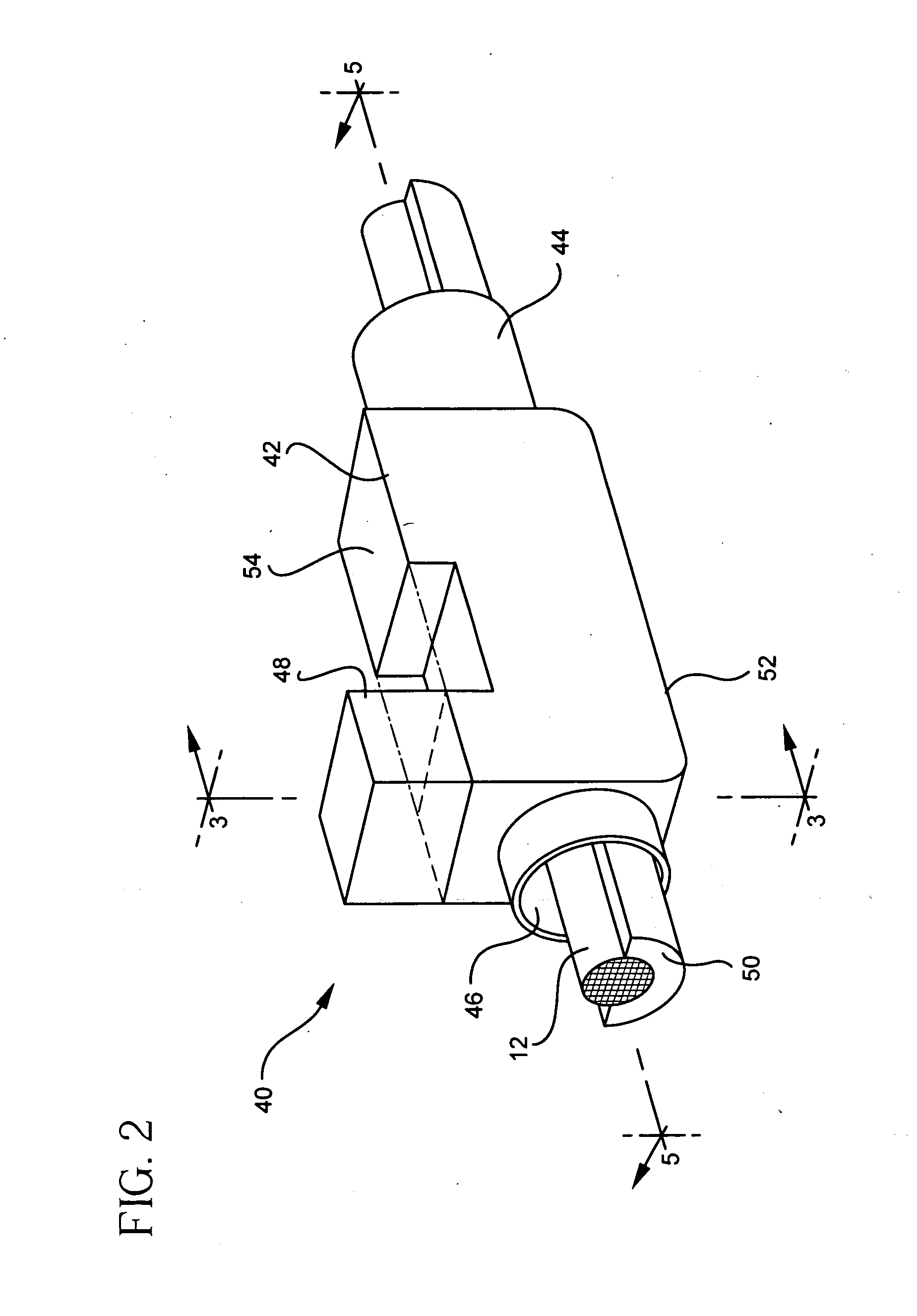Microwave stiffening system for ceramic extrudates
a technology of extruding body and microwave energy, which is applied in the direction of electrical equipment, auxiliary shaping equipment, drying solid materials, etc., can solve the problems of inability to fully self-support, difficult to handle logs in later processing steps, and low wet strength of as-extruded logs, so as to prevent sagging or handling deformation, improve efficiency and less cost, and prevent defects.
- Summary
- Abstract
- Description
- Claims
- Application Information
AI Technical Summary
Benefits of technology
Problems solved by technology
Method used
Image
Examples
Embodiment Construction
[0020]FIG. 1 illustrates the main features of the invention in a schematic fashion for a microwave stiffening system 10. A ceramic log 12 leaves a forming member or extruder 14 and is conveyed through a microwave applicator 16. Accordingly, the microwave applicator 16 is located at the exit or die end of the extruder 14 such that immediately upon being formed by the die member the ceramic log 12 is exposed to a field of microwave energy.
[0021] The microwave applicator 16 includes a chamber 20 and a single waveguide feed 28. Chamber 20 is outfitted with an inlet end 22 and an outlet end 24 in combination with a support 18 for carrying the log 12. Support 18 relates to any means as known in the art for continuously moving bodies, and preferably includes an air bearing system comprising a series of air bearing support chambers that are each supplied with air through individual conduits each of which is connected to a common air supply pipe, as described in U.S. Pat. No. 5,205,991 whic...
PUM
| Property | Measurement | Unit |
|---|---|---|
| frequency | aaaaa | aaaaa |
| power | aaaaa | aaaaa |
| power | aaaaa | aaaaa |
Abstract
Description
Claims
Application Information
 Login to View More
Login to View More - R&D
- Intellectual Property
- Life Sciences
- Materials
- Tech Scout
- Unparalleled Data Quality
- Higher Quality Content
- 60% Fewer Hallucinations
Browse by: Latest US Patents, China's latest patents, Technical Efficacy Thesaurus, Application Domain, Technology Topic, Popular Technical Reports.
© 2025 PatSnap. All rights reserved.Legal|Privacy policy|Modern Slavery Act Transparency Statement|Sitemap|About US| Contact US: help@patsnap.com



